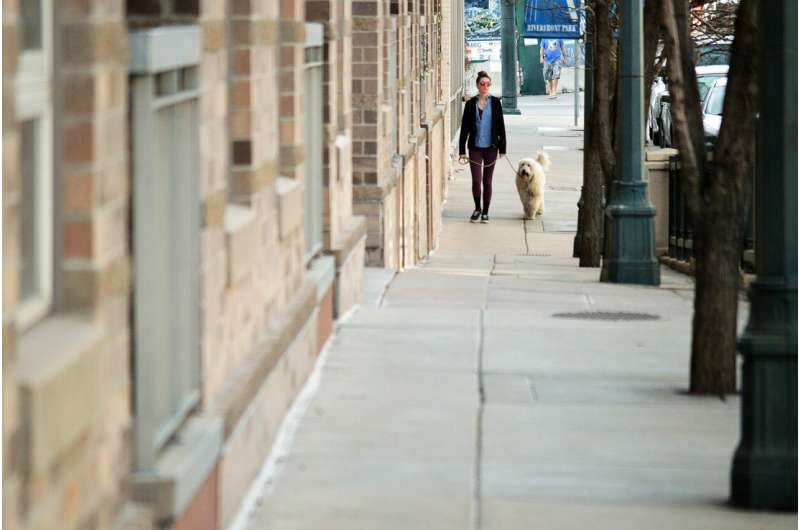Credit: Pixabay/CC0 Public Domain
A pair of natural science researchers from Marymount Manhattan College has found that high levels of dog feces landing on sidewalks in New York city has resulted in high levels of bacteria in homes and businesses. In their paper published in the journal Indoor and Built Environment, Alessandra Leri and Marjan Khan describe collecting and testing environmental samples from a large number of sites on Manhattan's Upper East Side.
Enterococci are a type of bacteria found in the intestines and fecal matter of most animals. They can also make their way into the environment during defecation and are known to persist on many materials, such as cement, carpeting and other flooring material. In this new effort, Leri and Khan have attempted to measure the amount of dog excrement landing on public sidewalks in New York City, and the degree to which the bacteria it carries may be making its way into homes, businesses and other public buildings.
To make their assessment, the researchers used pipettes to collect rainwater samples from public sidewalks and sticky tape to collect samples from floors and carpets in buildings. They also tested the soles of shoes of multiple volunteers using a sterile water rinse.
All of the samples were cultured in their lab to and grew to levels that could be observed under a microscope. Each was then studied to determine enterococci levels. The researchers found that levels in the rainwater samples were on average 31,000 per 100 milliliters. They note that the U.S. EPA has set a safe limit of 110 per 100 milliliters for public beaches as a way to compare levels. They also found that the number of bacteria found inside buildings, carried on the soles of people's shoes, was relative to the amount of traffic. As expected, they found more enterococci in carpeting than on flooring. They also found high levels on shoe soles, suggesting that they are the main transport vehicle.
The researchers conclude by noting that people can reduce levels of such bacteria in their homes by simply removing their shoes before entering—without touching their soles.
More information: Alessandra C Leri et al, Faecal indicator bacteria on indoor floors linked to exterior sidewalk contamination in New York City, Indoor and Built Environment (2023). DOI: 10.1177/1420326X231153566
© 2023 Science X Network
























